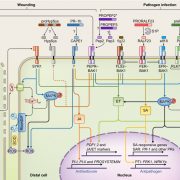
Review: The role of peptides cleaved from protein precursors in eliciting plant stress reactions (New Phytol)
Plant Science Research WeeklyAlthough the first signaling peptide identified in plants, systemin, is involved in stress responses, developmentally important peptide signals have largely occupied the limelight. This Tansley Review by Chen et al. summarizes recent insights into peptides with a role in stress responses: wounding, pathogen…
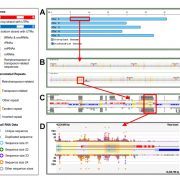
Next-Gen sequence databases: RNA and genomic informatics resources for plants (Plant Physiol)
Plant Science Research WeeklyDrawing on more than 15 years of improvements, Nakano et al. have released public websites and resources for data access, display, and analysis of plant small RNAs, from Arabidopsis to wheat and with many crops and model species represented. The tools can analyze, integrate and display the abundance…
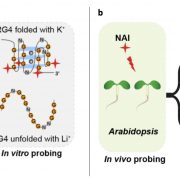
RNA G-quadruplex structures exist and function in vivo (bioRxiv)
Plant Science Research WeeklyRNA G quadruplex (RG4) structures that include two or more layers of G-quartets can form in guanine-rich RNA sequences. These structures are known exist in vitro and are proposed to form in vivo as well. However, there is no direct evidence from plants showing the presence of these structures in vivo. …

Penium margaritaceum genome bears footprints of evolutionary origins of land plants (bioRxiv)
Plant Science Research WeeklyThe Zygnematophyceae are the green algae that are most closely related to land plants. Some species in this clade are considered subaerial, meaning that they can live under air (as opposed to under water). The green films you see on tree trunks and walls are often Zygnematophycaea. Several new insights…
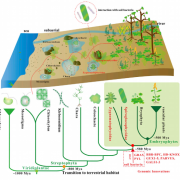
Genomes of subaerial Zygnematophyceae provide insights into land plant evolution ($) (Cell)
Plant Science Research WeeklyThe availability of charophyte algae genomic information is helping to understand how the plant transition to a terrestrial environment occurred at the molecular level. Here, Cheng et al. are releasing two genomes from the Zygnematophyceae clade (Spirogloea muscicola and Mesotaenium endlicherianum),…
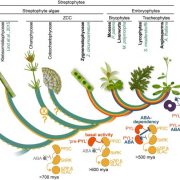
A ligand-independent origin of abscisic acid perception ($) (PNAS)
Plant Science Research WeeklyThe origins of ABA signaling have long been puzzling. Green algae make ABA but don't respond to it, and ABA receptors have appeared to be missing from their genomes. Reccently, Sun et al. identified a gene encoding an ortholog of PYL family of ABA receptor proteins in the transcriptome of an alga from…
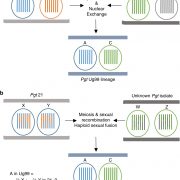
Emergence of the Ug99 lineage of the wheat stem rust pathogen through somatic hybridization (Nature Comms)
Plant Science Research WeeklyThe Ug99 strain of wheat stem rust pathogen Puccinia graminis f. sp. tritici (Pgt) emerged in Uganda in 1999 and presents a significant threat to global wheat production. Genetic analysis indicates it is distinct from other Pgt races. Li et al. set out to understand its origins. Puccinia graminis are…
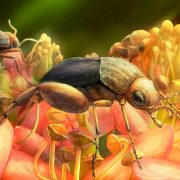
Pollination of Cretaceous flowers (PNAS)
Plant Science Research WeeklyLike something from Jurassic Park, a tiny insect embedded in amber has provided new insights into life millions of years ago. But in this case, the 99 million year old insect shows us that, as Darwin surmised, insects really were important contributors to angiosperm pollination from their origins. In…

Review: Ready-to-eat salad crops: A plant pathogen’s heaven (Plant Disease)
Plant Science Research WeeklyFor those of you celebrating Thanksgiving next weekend, here’s an article full of fun facts to share over the salad. Gullino et al. describe the history of salad (mentioned by Virgil and Pliny) and the rapid growth in the prepared salad industry. They describe the challenge of growing and getting these…

